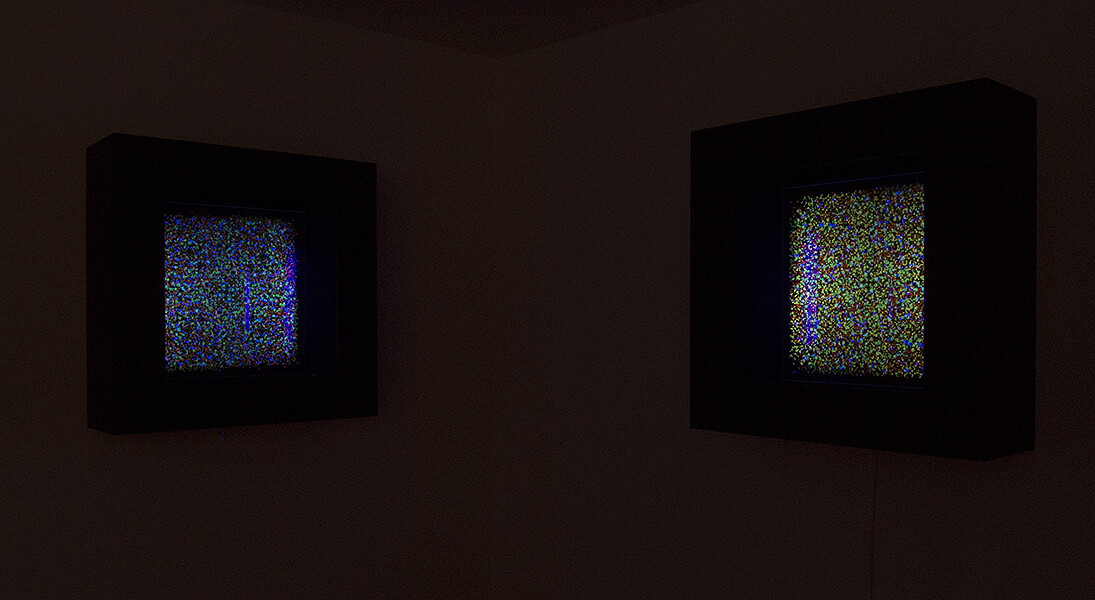The organizers wish to announce the release of the full-color catalog for the exhibition Visualizing Science.
Both the arts and sciences occupy threatened territory. Each approaches truth and notions of truth with a desire to prompt ideas surrounding our human condition. Visualizing Science stems from the need for mutual appreciation toward a collective understanding. These fields inform societies of significant challenges while working towards an optimistic future. There are radical forces at work that seek to undermine facts and the importance of aesthetic experiences. This new form of Neo-Luddism is not opposed to technology, but questions facts derived from science and the important constructs that underpin research, intellectualism and aesthetic exploration.
The participants of Visualizing Science see collaborations modeled upon this project as a means to fortify against anti-intellectualism while celebrating the productivity inherent in interdisciplinary work. Science interlaced with the cultural understanding of persuasive practitioners is a dialogue that can inform and evolve society far more than either independently.
Kosmos
Human subcultures and biological organisms exist as intersecting, overlapping communities—in a word, as “microbiomes.” The Sumi ink markings in this work suggest a pattern of layered interactions with no ontological hierarchy or precedence.
Nishiki Sugawara-Beda is a painter in calligraphy, Sumi-e, and mixed-media installations. James A. Foster works in the fields of ecology, computational biology, and bioinformatics.
Pivot
Not representing any particular animal but drawing from that world, this work engages with the mysteries of muscles, tendons, and bones—its elasticity.
Val Carter explores the relationships between humans and animals in painting, printmaking, and sculpture. Craig McGowan studies biomedical science, ecology, and evolutionary biology.
Abundant
Inspired by mathematical models of insect swarms, this project suggests the presence of barely perceptible insects in the every.
Delphine Keim is a visual designer whose work is grounded in the interplay between text and image. Sally Graves Machlis paints stories in ink, watercolor, and mixed media. Sanford Eigenbrode, a self-described “aphid guy,” is an entomologist who studies climate change and agriculture.
Hyperelliptic Threshold Noise
Polynomial equations can generate a plot over any field. These prints deploy layers of color on the abstract void of a black background, bringing numerical plots into tangible form.
Mike Sonnichsen is a printmaker, specializing in representing concrete physical objects with rich color and clarity. Jennifer Johnson-Leung studies algebraic geometry and number theory—what some would call “pure math.”
The Little Phage
Bacteriophages (or phages) are viruses that replicate themselves by infecting bacteria. This picture book for children displays the role of human scientists in creating phages, portraying “the little phage” as a hero.
Greg Turner-Rahman works in the field of virtual technology and design and has a special interest in writing and illustrating children’s books. Holly Wichman does research in evolutionary biology and molecular biology with a particular focus on viruses.
Nebulous
Human eyeballs are deformed and sight is lost from extended space flight. Evoking this problem and overcoming the impact this may have on our space aspirations is the central concern.
J. Casey Doyle is currently exploring works in ceramics. Bryn Martin uses engineering techniques to help diagnose and treat neurological disorders.
To Find (in) Words
Immediately after a burn, the fallen trees seem nothing more than blackened sticks. The resilient fabric of forest ecology, in the face of changes that increase fire dangers is required as we deal with climate change.
Stacy Isenbarger works in mixed-media sculptures and installations. Penelope Morgan’s research focuses on fire ecology and management and landscape ecology and dynamics.
Sally Graves Machlis & Roger H.D. Rowley, curators; Scott Slovic, project writer & interviewer; David Gottwald, designer


